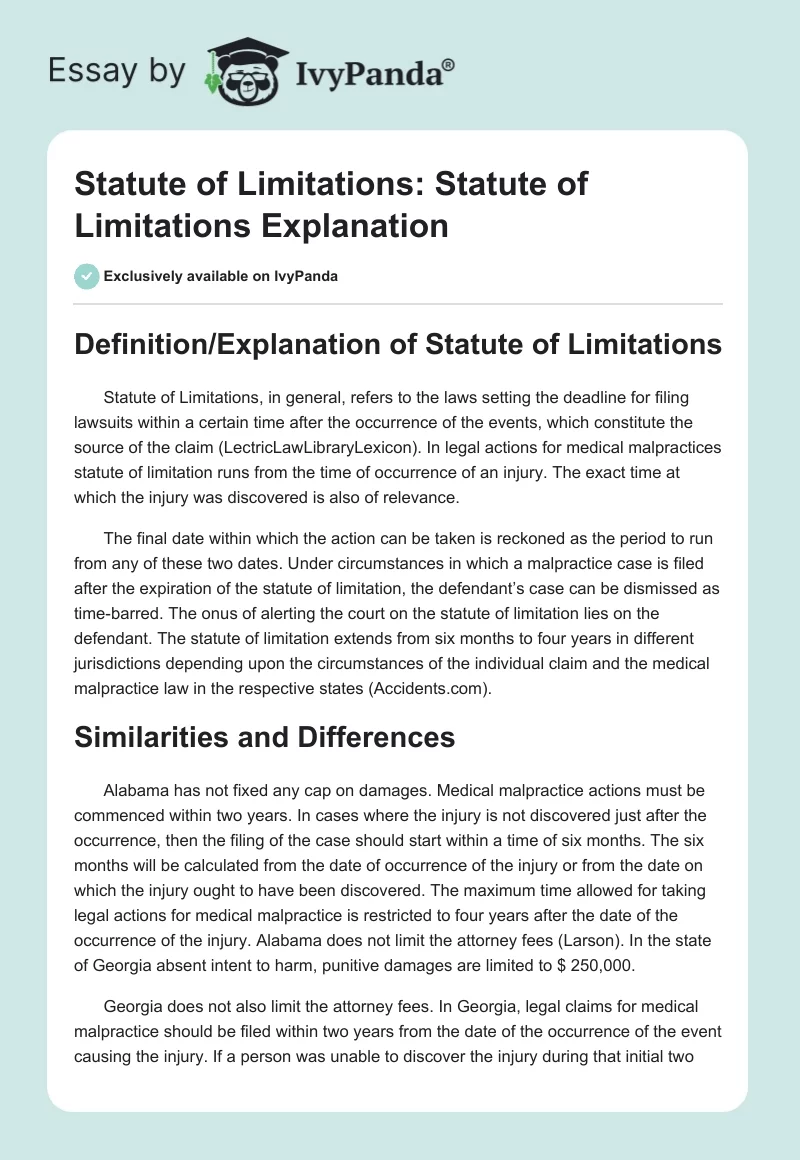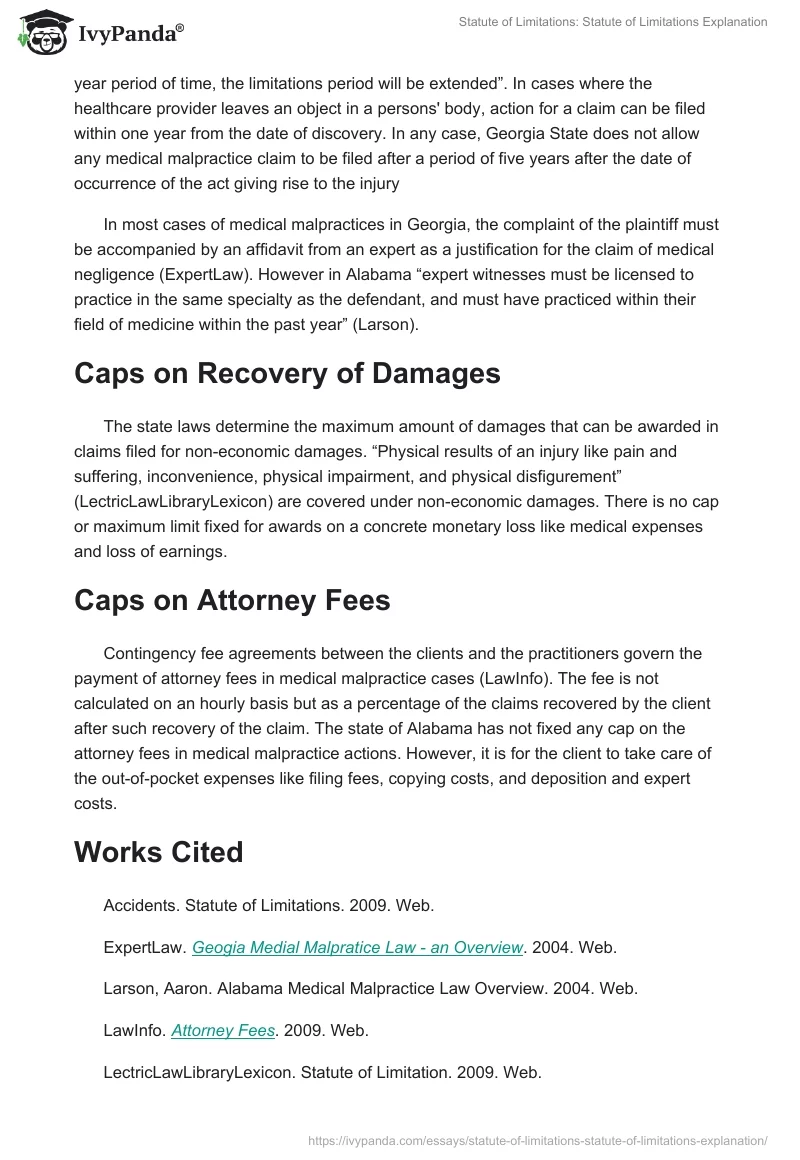Definition/Explanation of Statute of Limitations
Statute of Limitations, in general, refers to the laws setting the deadline for filing lawsuits within a certain time after the occurrence of the events, which constitute the source of the claim (LectricLawLibraryLexicon). In legal actions for medical malpractices statute of limitation runs from the time of occurrence of an injury. The exact time at which the injury was discovered is also of relevance.
The final date within which the action can be taken is reckoned as the period to run from any of these two dates. Under circumstances in which a malpractice case is filed after the expiration of the statute of limitation, the defendant’s case can be dismissed as time-barred. The onus of alerting the court on the statute of limitation lies on the defendant. The statute of limitation extends from six months to four years in different jurisdictions depending upon the circumstances of the individual claim and the medical malpractice law in the respective states (Accidents.com).
Similarities and Differences
Alabama has not fixed any cap on damages. Medical malpractice actions must be commenced within two years. In cases where the injury is not discovered just after the occurrence, then the filing of the case should start within a time of six months. The six months will be calculated from the date of occurrence of the injury or from the date on which the injury ought to have been discovered. The maximum time allowed for taking legal actions for medical malpractice is restricted to four years after the date of the occurrence of the injury. Alabama does not limit the attorney fees (Larson). In the state of Georgia absent intent to harm, punitive damages are limited to $ 250,000.
Georgia does not also limit the attorney fees. In Georgia, legal claims for medical malpractice should be filed within two years from the date of the occurrence of the event causing the injury. If a person was unable to discover the injury during that initial two year period of time, the limitations period will be extended”. In cases where the healthcare provider leaves an object in a persons’ body, action for a claim can be filed within one year from the date of discovery. In any case, Georgia State does not allow any medical malpractice claim to be filed after a period of five years after the date of occurrence of the act giving rise to the injury
In most cases of medical malpractices in Georgia, the complaint of the plaintiff must be accompanied by an affidavit from an expert as a justification for the claim of medical negligence (ExpertLaw). However in Alabama “expert witnesses must be licensed to practice in the same specialty as the defendant, and must have practiced within their field of medicine within the past year” (Larson).
Caps on Recovery of Damages
The state laws determine the maximum amount of damages that can be awarded in claims filed for non-economic damages. “Physical results of an injury like pain and suffering, inconvenience, physical impairment, and physical disfigurement” (LectricLawLibraryLexicon) are covered under non-economic damages. There is no cap or maximum limit fixed for awards on a concrete monetary loss like medical expenses and loss of earnings.
Caps on Attorney Fees
Contingency fee agreements between the clients and the practitioners govern the payment of attorney fees in medical malpractice cases (LawInfo). The fee is not calculated on an hourly basis but as a percentage of the claims recovered by the client after such recovery of the claim. The state of Alabama has not fixed any cap on the attorney fees in medical malpractice actions. However, it is for the client to take care of the out-of-pocket expenses like filing fees, copying costs, and deposition and expert costs.
Works Cited
Accidents. Statute of Limitations. 2009. Web.
ExpertLaw. Geogia Medial Malpratice Law – an Overview. 2004. Web.
Larson, Aaron. Alabama Medical Malpractice Law Overview. 2004. Web.
LawInfo. Attorney Fees. 2009. Web.
LectricLawLibraryLexicon. Statute of Limitation. 2009. Web.


